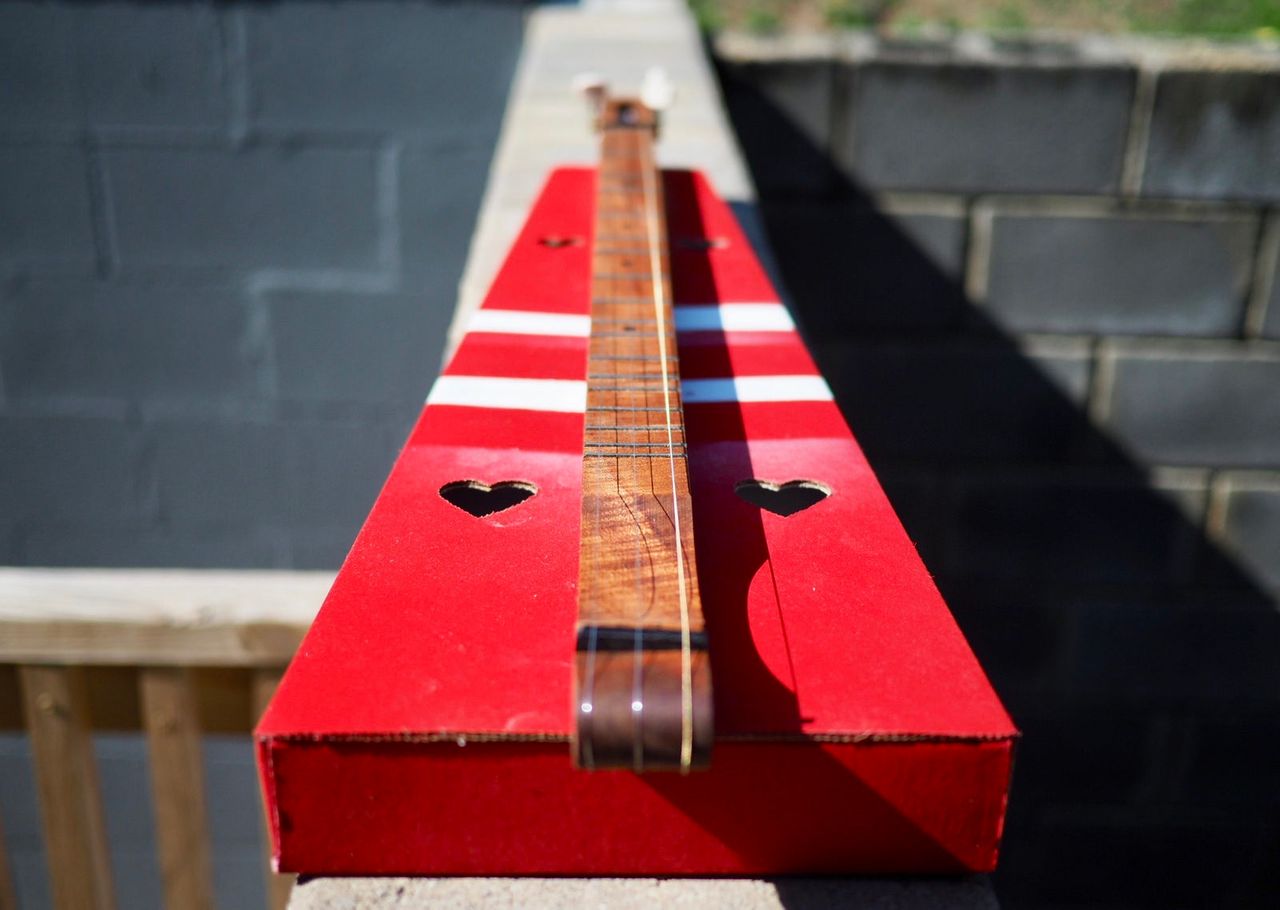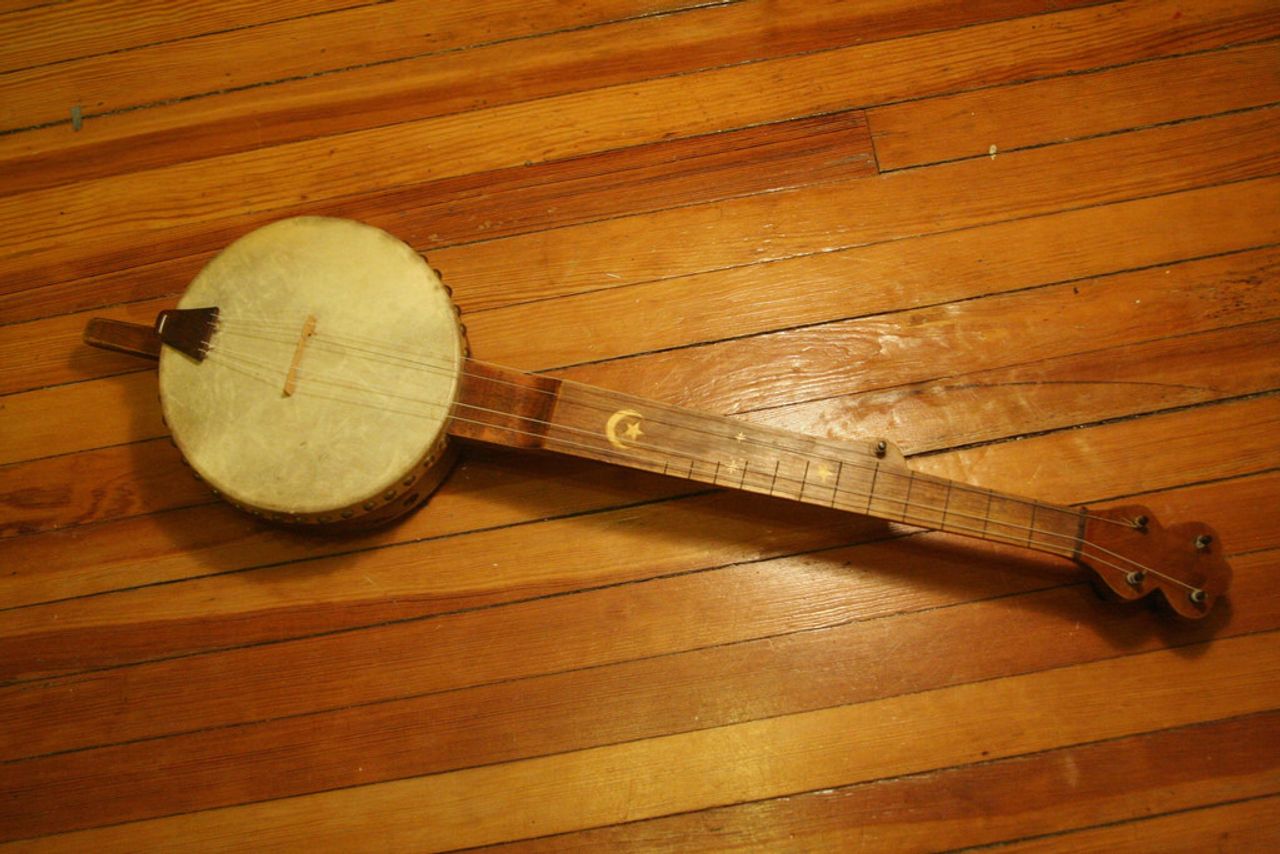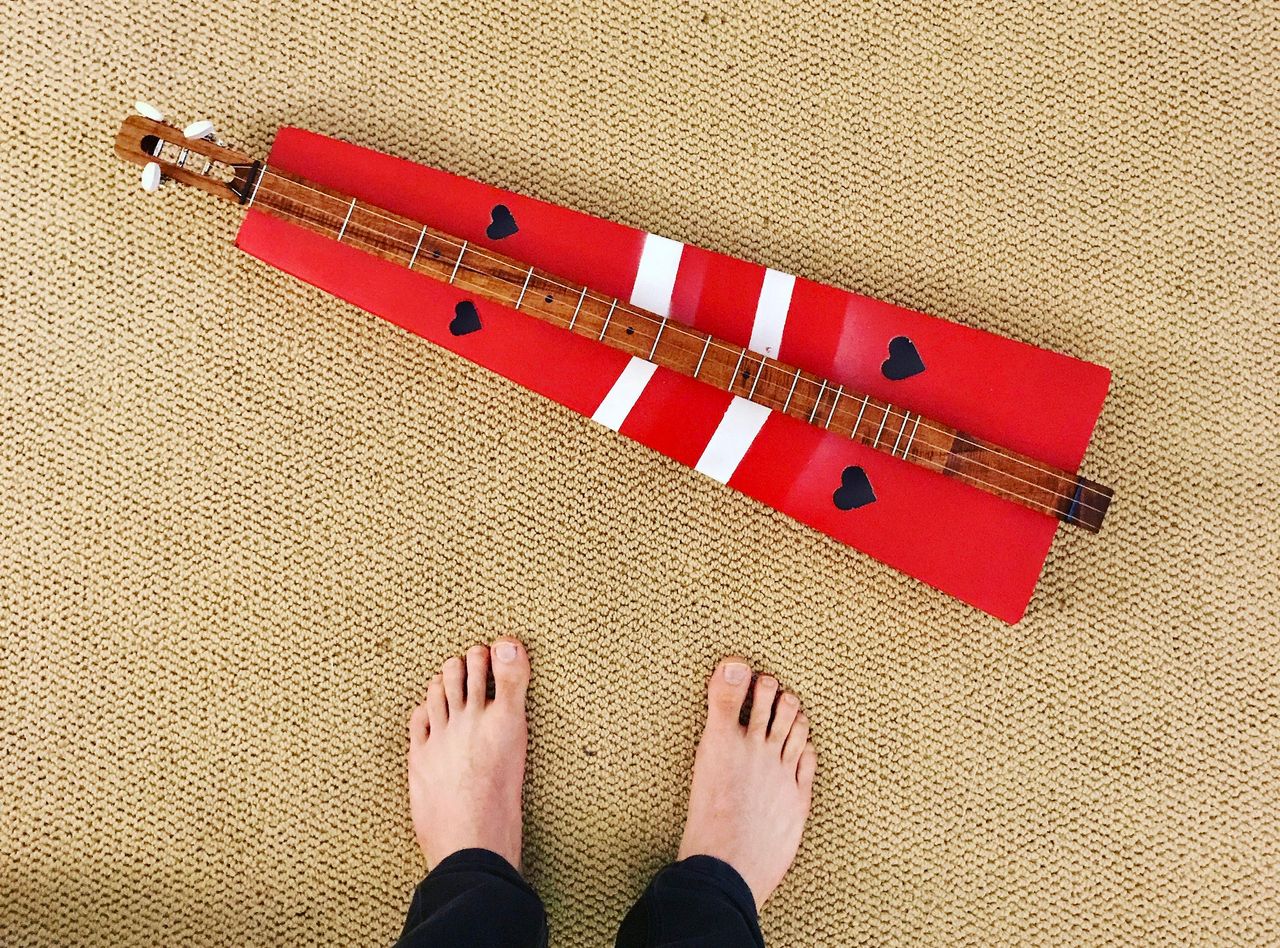My Mountain Dulcimer

I just finished building a mountain dulcimer - a backyard music model with a beautiful mahogany fretboard that I finished with Watco danish oil. It’s lovely, and a nice new playing experience.
I started on the acoustic guitar, on a steel-stringed classical that cut my fingers then and is still awful to play now. Considering how we start kids with that kind of guitar and, in my case, the challenging recorder, it’s a miracle anyone sticks with it.
The first non-guitar instrument I committed to was the ukulele, and I even made a ukulele tabs website back in 2008 or so. It was experiencing a resurgence, with Postcards from Italy blaring in every coffeeshop. But I was drinking tea, I didn’t start drinking coffee until 2009.
The ukulele introduced me to reentrant tuning, the idea that the order of strings doesn’t have to match the order of their pitches. In terms of playing technique, though, the only big difference from guitar is triplet strumming, a technique I never mastered.

I wanted something that was less like a guitar, so I went to the banjo - specifically the open-back banjo, the quieter and lighter kind. The banjo, like the ukulele, has reentrant tuning, but also introduced me to the wonderful clawhammer style of playing, with the creative rhythmic workarounds it inspires, like alternate string pull-offs.
I recorded some traditional songs on banjo, and continue to - it’s really my favorite instrument for playing alone, since so many of the songs I learn from Mike Iverson’s lovely tabs are so complete even by themselves. I now own an Enoch banjo, which might even qualify as locally-made in Maryland, and previously had a fretless.

Which brings me to the dulcimer, and why it’s the instrument I’ll spend some time learning. The dulcimer is still in the zither family, but, unlike the banjo, guitar, and ukulele, has a diatonic-tuned fretboard, and is played facing up, like a lap steel.
I think it might be the ideal instrument for teaching children, which is something I’d love to do at some point. Diatonic frets mean that the frets aren’t evenly spaced in a geometrical sequence, but that all flat notes are omitted, leaving only natural notes.
It’s limiting tonally - you can’t hit the ‘blue note’ that differentiates some blues, or any of the other notes in the pentatonic scale. But on the other hand, it makes the meaning of modes crystal-clear and frees you to simply play the tone you expect, most of the time.
Plus, the dulcimer is a lot like the banjo, in that it’s a “folk instrument” that is incredibly cheap - this kit was $50 - and nearly indestructible.
Here’s Charley Patton’s ‘Some of these days’, a song I heard first in Andrew Bird’s beautiful cover.